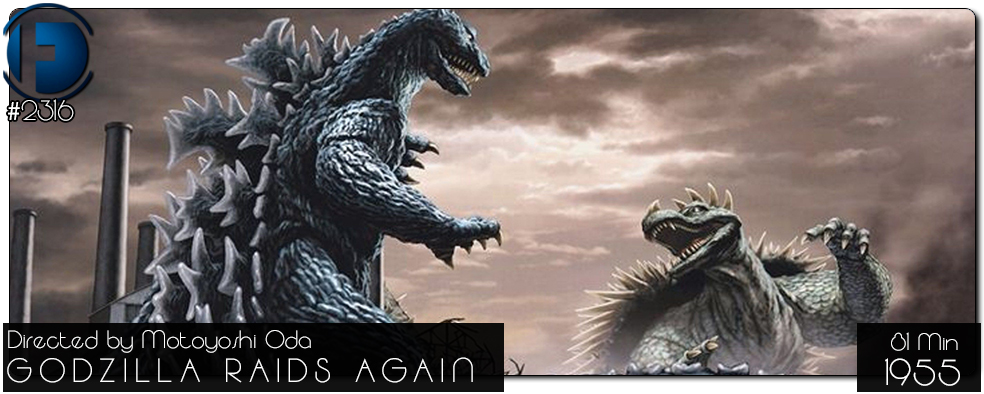Movie Review – Godzilla Raids Again
Principal Cast : Hiroshi Koizumi, Setsuko Wakayama, Minoru Chiaki, Takashi Shimura, Masai Shimizu, Seijiro Onda, Sonosuke Sawamura, Yoshia Tsuchiua, Haruo Nakajima, Katsumi Tezuka.
Synopsis: Scout pilots for a fishing company are startled to discover a second Godzilla, whose battle with rival monster Anguirus threatens to destroy Osaka.
********
Fascinatingly dull, this quick-footed sequel to the original Godzilla is startlingly insipid in both character and plot, held together by forgettable quartet of characters and only aided by commendable man-in-suit-miniature effects that range from good to silly. Whereas the first film had a visceral terror lurking beneath it despite the clunky effects and low-budget look, Godzilla Raids Again (titled Gigantis: The Fire Monster on its initial US release) is utterly predictable and entirely without excitement, despite the earnest performances within. Original director Ishiro Honda was busy elsewhere when Toho quickly put this film into production off the back of Godzilla’s success, and tapped journeyman filmmaker Motoyoshi Oda to helm this project; noted for his quick production style and ability to churn out films at a rapid clip, Oda delivered Godzilla Raids Again for its debut in 1955, barely six months after the release of the original movie! This rushed schedule and near-halving of the original Godzilla’s production budget is evident in the finished film’s poor quality, although it is notable as being the progenitor of the monster-vs-monster conceit popularised by the franchise.
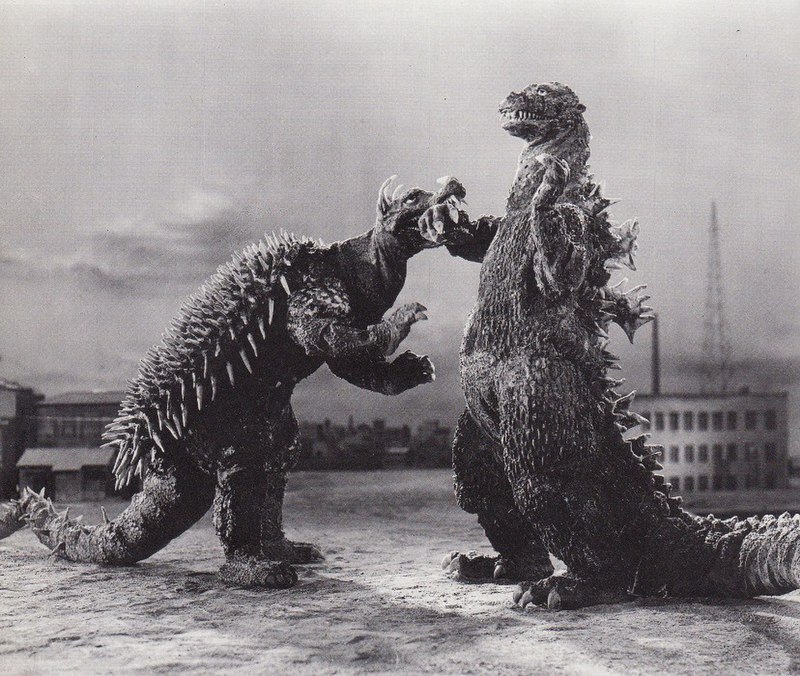
Fishing trawler scout pilot Shoichi Tsukioka (Hiroshi Koizumi) makes an emergency landing on a remote island to rescue a stranded compatriot, Koji Kobayashi (Minoru Chiaki), when they discover a rampaging Godzilla (portrayed by Haruo Nakajima) battling an enormous Ankylosaurus, named by scientists as Anguirus (portrayed by Katsumi Tezuka); shocked, the military prepares the country to combat the once-thought destroyed Godzilla as it makes landfall on the Japanese islands, tearing through numerous cities as it battles Anguirus ferociously. Tsukioka’s girlfriend, Hidemi (Setsuko Wakayama) works at her father’s fish plant, as a radio operator, and implores both he and Kobayashi to take care as they help the air-force try to bombard Godzilla into oblivion: when conventional warfare doesn’t work, they are forced to resort to terraforming a nearby volcanic island as part of their plan.
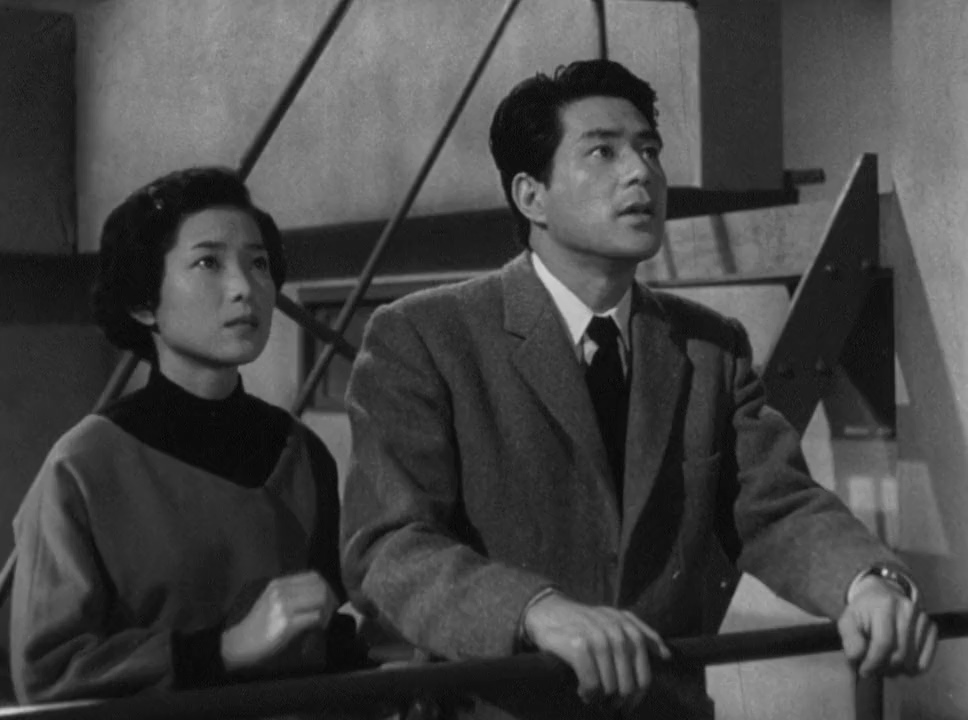
Okay, this film isn’t very good. Like, at all. Narratively, the film flits between generic square-jawed hero archetypes and babbling militaristic types and never quite drawing a connection between the two. Hiroshi Koizumi’s flyboy ace and Minoru Chiaki’s heroic “best friend” cliche work well enough but there’s nothing to their development as counterweights to Godzilla’s destructive rampage this time around. The silliest of romantic subplots involved clatters like dropping a cupboard of pots and pans onto a tiled floor, while the Japanese Self Defence Force commander, Captain Terasawa (a solid Seijiro Onda) is appropriately blustery and commandeering. There’s just nothing exciting here, no investment in the plot or the battle-royale between Godzilla and the cat-like Anguirus, who spend a large portion of the film rolling around a scale-model of the city of Osaka, destroying vast swathes of it. This in itself is relatively thrilling, I guess, but the ideas behind it and the motivations for any of the characters is thinly developed, if it’s noticeable at all. There’s no real development of Godzilla’s role as an apocalyptic representation of nuclear devastation, instead becoming pretty much just a hokey dude in a rubber suit everyone looks afraid of.
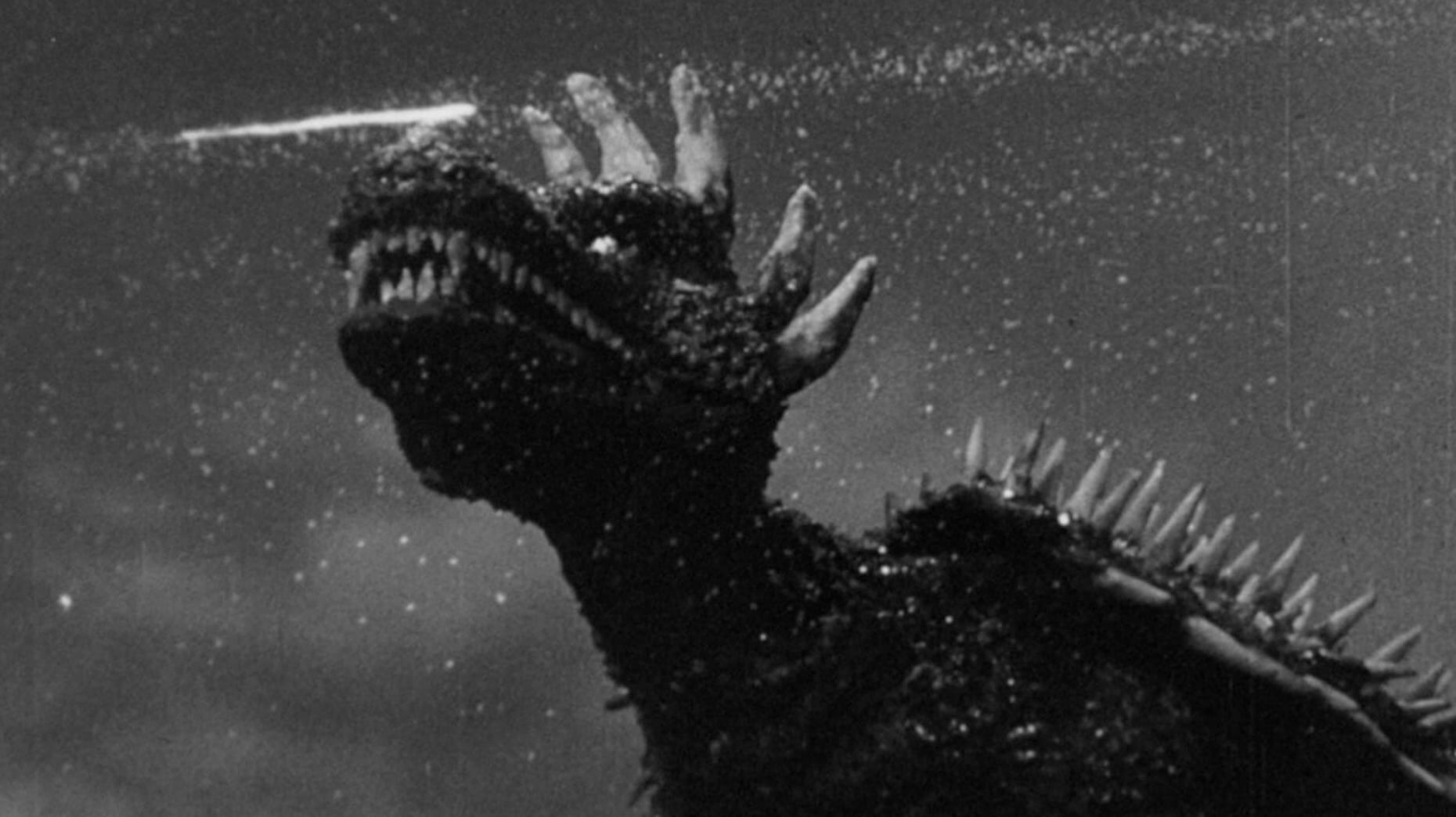
The film’s technical merits are scant, to say the least. Oda’s direction is limited to clumsy close-ups and actors reacting off into the middle distance, cut between wide shots of Godzilla and Angiurus doing their slow-motion destruction backed by a load generic sound effects. An onslaught of “visual effects” really isn’t as interesting as you might expect – to his credit, Oda reminds us of what happened in the previous film by actually splicing in footage of Godzilla’s attack on Tokyo from Ishiro Honda’s movie as a “…last time, on Godzilla” plot beat, which instantly places us back into the mindset required for this sequel, but everything around Godzilla’s attacks and the Japanese attempts to repel him is just stupid. From the dialogue to the plot to the contrived devices used to conveniently have Godzilla move out to a weird ice-covered mountain island for the final battle, the film cries out for something genuine to happen, some emotional investment for the audience, but alas, it does not. The set design and camerawork looks cheap, cobbled together as hastily as possible, while the actors look to be rushing through their scenes with little time given to grow their characters. The protracted battle between Godzilla and the Japanese military forces grows tiresome real fast, with multiple explosions and cutaways going on for an eternity before anything actually happens to the titular monster; you get the sense Motoyushi Oda was trying to Michael Bay this thing – the more explosions you have, the less time you give people to think about the silliness of what they’re watching. Perhaps in the Japanese cinemas of the mid-50’s this worked, but on a modern 4K screen in my loungeroom the effect is diminished significantly.
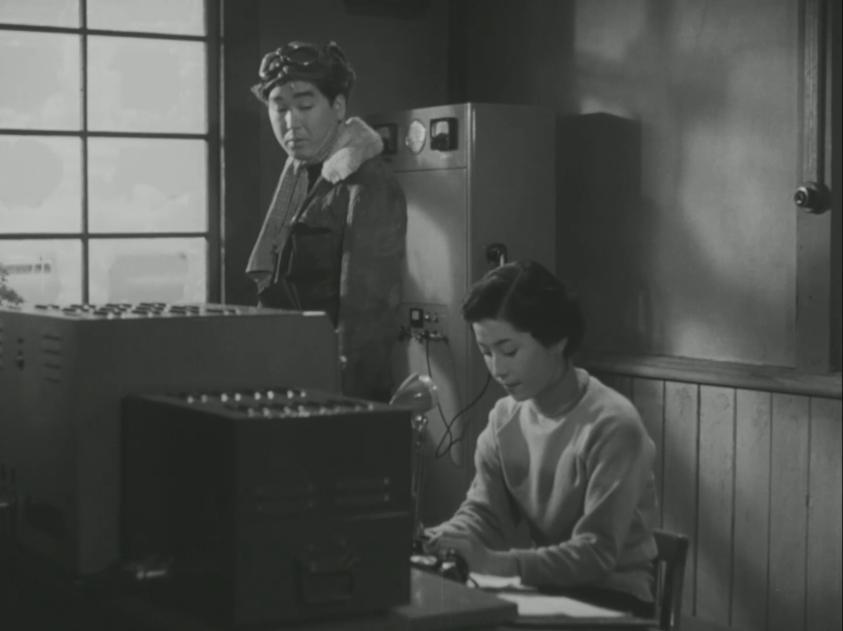
Boring as hell, Godzilla Raids Again is a lamentable sequel lacking any of the potency, urgency or credibility of its big-brother ancestor. Regarded as a vastly inferior film by many, it isn’t hard to see how a reduction in budget and studio mandated production timeframe crunch forced significant issues with both the script and the visual effects, and despite being a financial success it lacks the white-hot undercurrent of nuclear tension its predecessor had, sadly to its detriment. Forgettable claptrap doesn’t come much more forgettable than this.

